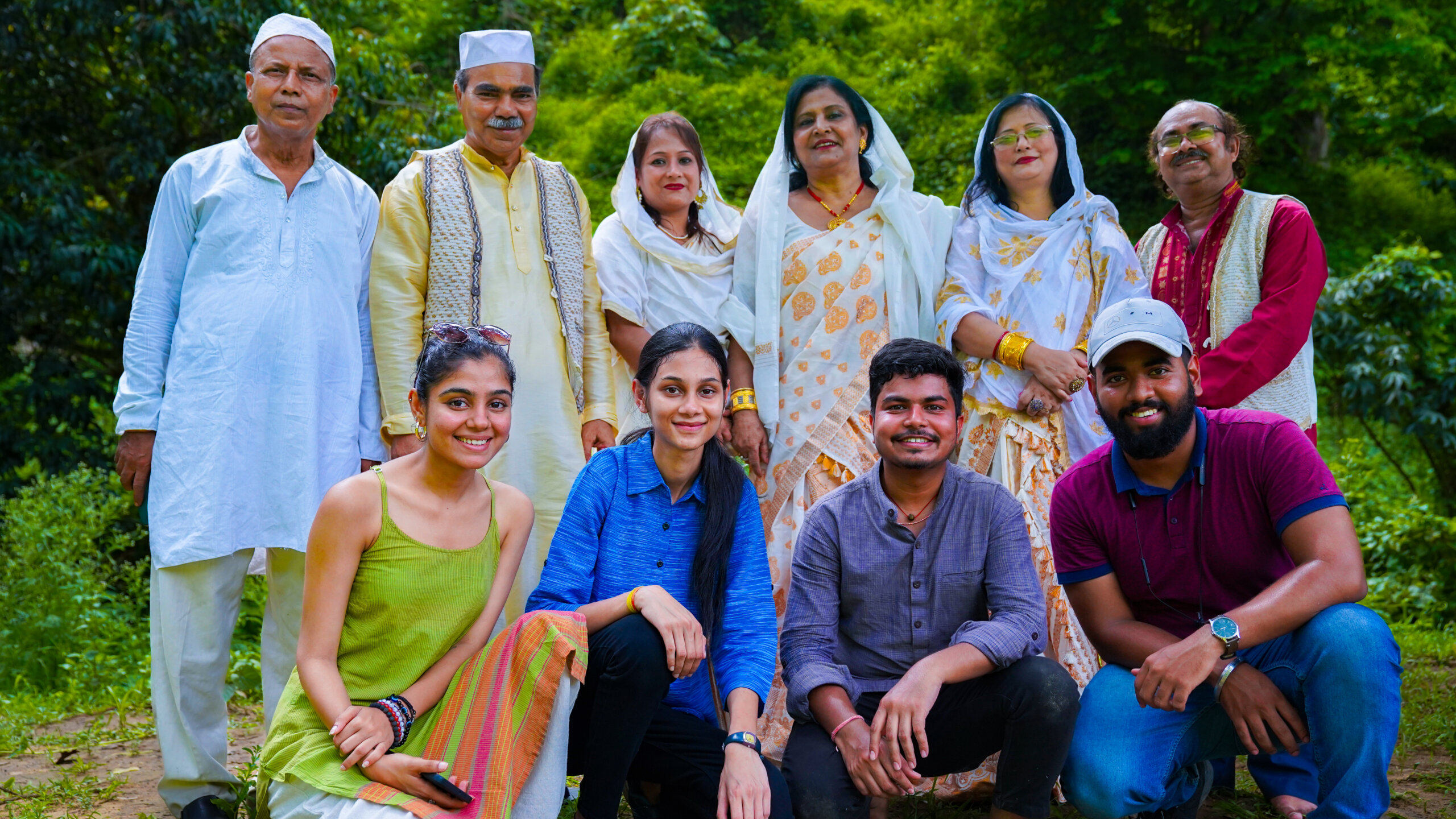
Of Faith and Fidelity: Zikir and Zari music of Assam
If you appreciate Sufi music, then you’ll be compelled by the soulful folk genre of Zikir and Zari. Hafeza Begum Chowdhury deserves our heartfelt gratitude for gracefully introducing us to this genre of music. As a trailblazer in the Zikir Zari art form, she has elevated its stature through her dedication. It’s remarkable to discover that Assam, a world within itself, harbours such a splendid array of musical genres. From tribal melodies to the nurturing embrace of Zikir and Zari, the music from this region truly inspires and enriches our souls.
Zikir, derived from the Arabic term “Ziqr,” embodies the act of singing or recalling Allah’s name through spiritual chants and deep remembrance.
Upon asking about this folk form, Hafeza Bgeum shared that, During the 17th century, the songs of Zikir and Zari gained prominence, primarily attributed to the Sufi saint and poet Hazrat Shah Miran, also known as Ajan Fakir. Ajan Fakir, originally from Baghdad, arrived in Assam and settled in Suwaguri Sapori, near present-day Sibsagar town in northeastern India. Accompanying him on this journey was his brother, Shah Navi. Legend has it that Ajan Fakir earned the name “Ajan Fakir ” or “Ajan Pir” for introducing the recitation of “Azan” as a vital aspect of Muslim rituals among the Assamese Muslim community.
Hafeza further shared the profound philosophy underlying Zikir and Zari Sangeet, highlighting its three fundamental aspects: Namaz (Islamic prayers), Kulima (recitation of holy scriptures), and Rujha Haj Zakhat (pilgrimage and acts of charity during the holy month of Ramadan). The essence of these songs outlines and reflects the life of Hazrat Shah Miran, known as Ajan Fakir, as well as compositions centred around devotion, everyday life and spirituality. The Zari songs, with their poignant melodies, carry the weight of burial hymns, resonating with the tales of Karbala’s tragic event of Hassan, and Hussain (Islamic figures of Shia Islam). They find their solemn place during the sacred month of Muharram, their lyrics serving as reflections of societal injustices.
Ajan Pir, a visionary poet, took up his pen to craft these songs as tukari geet, weaving them with the essence of pure Assamese language. His aim was to ensure that the common folk could grasp their messages. With a touch of simplicity, he artfully conveyed the fundamental principles of Islam, safeguarding its religious doctrines within these songs.
Hafeza Begum’s group, consisting of seven members, showcased their folk form during the performance. In the traditional Zikir Zari style, they utilized instruments like the dotara (stringed instrument), ektara (one-stringed instrument), flute (wind instrument), and minor percussion to create a vibrant musical experience. One intriguing aspect of this folk form is the participation of women, with one taking the lead as the vocalist while the others provide harmonious backing vocals. Additionally, the women contribute to the music through rhythmic clapping, a vital element of every performance.
In their performances, the women grace the stage dressed in white, traditionally adorning the quintessential Assamese saree known as “Mekhela Chador.” As a symbol of reverence, they elegantly cover their heads with a white veil. Similarly, the men demonstrate respect by wearing the cap called “Taqiyah” on their heads throughout the performance. This attention to attire and adornment adds a touch of cultural authenticity and reverence to the mesmerizing display of Zikir and Zari Sangeet.
Hafeza Begum’s group had us completely charmed as they started performing, presenting themselves with utmost grace and purity. Dressed in bright white traditional garments, their presence against the backdrop of lush greenery created a visually mesmerizing scene. The soulful melodies of the Sufi genre added an extra layer of beauty, making their performance truly stand out and visually appealing.
Zikir and Zari songs were preserved and perpetuated by both Ajan Peer and his disciples, who served as the dedicated custodians of these musical traditions.
Unlike written compositions, these songs did not exist in documented form. Instead, they were shared and disseminated like other folk songs. Due to their oral nature, the transmission of these songs relied solely on the spoken word, allowing them to be passed down through generations.
Hafeza Begum Chowdhury, as the lead vocalist, was accompanied by Tasrin Ara Rohman and Sayeda Saikia on the backup vocals. On the flute was Harekrishna Talukdar, and the dotara was Tikendrajit Bharali and Nikunja Medhi; on the ektara warmed us all with their delightful performances; interacting and hearing their stories was even more heartwarming and behind their profiles were true artists who wanted to create a difference through their art and keep it going for as long as possible.
Despite their diverse backgrounds and personal goals, these musicians are bound together by their music. When they perform, they unite as one, and their music has the power to unite the listeners as well. In those moments, boundaries dissolve, and a sense of unity emerges, connecting the performers and their audience in a profound way.
– Meghal Sharma (Research Fellow)
